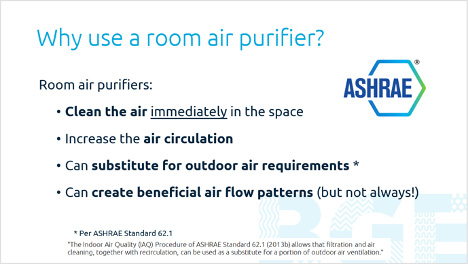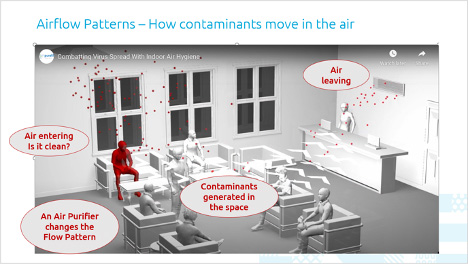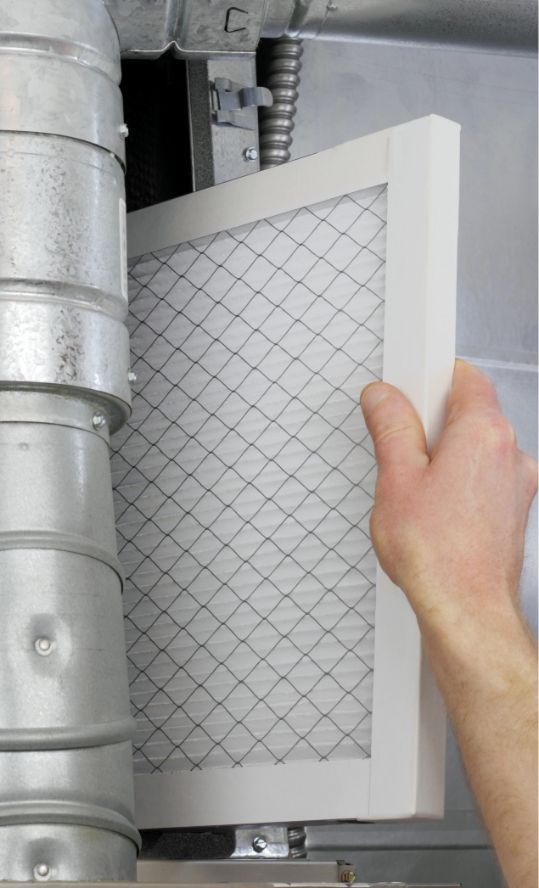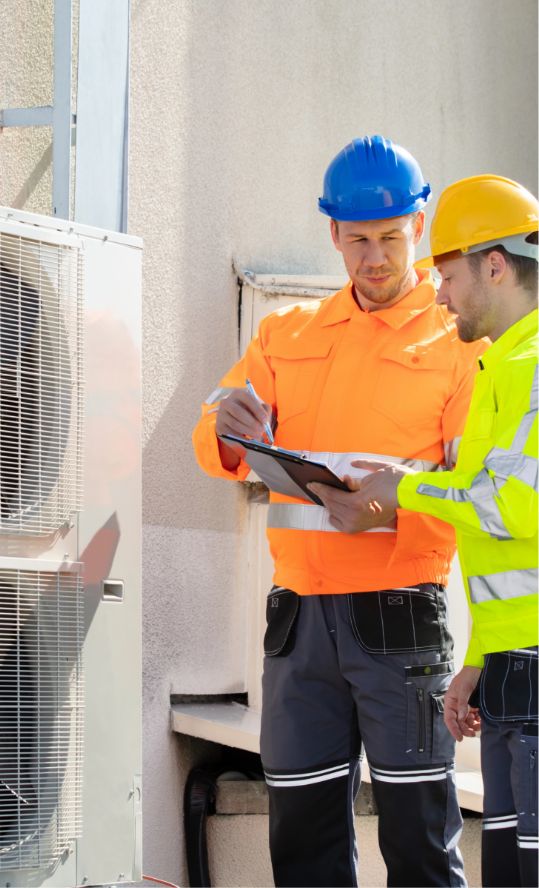
Room Air Purifiers May Not Always Help
A (somewhat) common scenario in 2021
It’s your day off, and you’re finally tackling your to-do list – renewing your driver’s license at the motor vehicles registry, then heading to the dentist. Naturally there’s a long, slow moving line up, and you’re stuck at the very back.
The good news is this registry location has recently invested in a good room air purifier with a powerful fan, to help protect their customers from airborne viruses. The bad news is they put it at the front of the line and it’s blowing past 20 other people before the stream of “clean” air finally gets to you. You notice that one of the people near the front is coughing badly through a very thin, loose-fitting face mask. And he keeps lifting the mask to cough into his hands.
You can almost see the COVID-19 particle cloud swirling directly towards you! You grimace and leave in a hurried panic. The license can wait.
Room Air Purifiers are designed to purify or “clean” the air passing through them. With a good HEPA system, they can be as effective at capturing viruses such as COVID-19 as they are at capturing dust particles, pollen, spores, etc.
But deploy even the best products poorly and they will be of little or no help in achieving your goals. As in the story above, they can even create new issues and increased risks if poorly or thoughtlessly deployed.
Air Purifiers Can Supplement Or Help Make Up For Inadequate Ventilation
The first recommendation to improve air quality and reduce virus transmission risks in any space is to improve the ventilation, by drawing in outside air of known quality and further conditioning it and filtering it as needed as it comes into the building or space.
Minimum ventilation rates are recommended by ASHRAE and others, but generally the more ventilation the better. Unfortunately, good ventilation may not always be achievable, or it may not always be feasible to heat or cool or adequately filter enough outside air to achieve the desired ventilation rates.
And that’s where air purifiers have a role to play—they can supplement or help make up for inadequate ventilation. They can also take on an even bigger role when wildfire smoke is making the outside air poor. Or when extra purification is wanted to minimize virus risks, help with pollen and asthma, etc.
FACT: Breathing the air coming directly out of a good room air purifier should always be an improvement over breathing the air going in, or over breathing the air elsewhere in a room with no open windows.
MYTH: Adding a room air purifier(s) randomly into the space will always help you achieve your air quality goals.

In previous posts we talked about the importance of first conducting a proper assessment to figure out if you need or can benefit from an air purifier(s) solution, and then in follow-up deliberately targeting a room air purifier(s) product solution that is a best-fit for your application.
In this post, we’ll focus on making sure the air purifier you choose is actually going to do the best job it can do for you.
With air purifiers, it’s important to further understand, assess and optimize air flow patterns.
If you operate a pharmaceutical lab, sensitive manufacturing process, or other critical environment where controlled clean air matters greatly, then you already understand what I’m talking about. Imagine working on sensitive electronics or research compounds on a lab station under a protective hood and then blowing turbulent air violently into the space at the open side of the hood. It doesn’t matter how pure the air is that’s blowing into the space, the blowing, turbulent air pattern itself risks stirring up trouble. It’s not enough that you have a supply of purified air if nothing is sensibly directing and flowing the clean air in the manner needed for the application.
This may sound like a leap, but there are parallels in the classroom, in the meeting room, in the computer room, in the office environment, in the control room, on the shop floor, in restaurants, stores, arenas and in the line ups at the registry and cinema snack counters. Every indoor application and space has a unique best-fit ventilation-and-inlet-outlet air flow pattern(s) that will ensure the air quality is optimized for that space.
Who or what are you trying to protect; and what air flow pattern(s) will best protect them versus put them at risk?

Every space has an existing air flow pattern(s). Air comes in, air goes out. Ducts and vents, intakes and exhausts, fans, open areas, gaps, doors, passageways, windows, ceiling heights, barriers, sources of heat and cooling, and even materials all contribute to air flow patterns. Activity and people contribute in a big way too.
To get the best bang for your air purifier buck, you really do need to understand and account for air flow patterns. The air flow pattern created by the air purifier(s) under its normal operating conditions (i.e. speed, flow rate) should complement or add benefit to existing air flow patterns. It needs to be added in with the existing air flow patterns in the space to reveal the combined air flow pattern. You can then determine the best specific location and operation (speed) of the air purifier(s) needed to achieve your air quality goals by determining how those air flow patterns can be expected to impact the people in the space, with each different proposed air purifier location(s) under consideration.
And in fact, this exercise can even be carried out on paper with different purifier types to help determine which type of air purifier might be a best-fit for your application – for example, a ceiling-mounted non-turbulent-flow unit versus a specific floor-mounted high-speed vertical-exhaust unit. Don’t forget that your space is 3-dimensional (or more) and people breathe in and out at specific heights and work and sit and move in specific directions and ways, so there are a lot of variables to play with here.
Obviously, there’s a fair amount of complexity and a bit of art to all of this, but if nothing else, hopefully I’ve been able to help you understand why it’s important to factor in air flow patterns into your air purifier deployment. Do it poorly and the people downstream (and at the back of the line) may be put at greater risk instead of lesser, which is probably not what you wanted. Take the time and make the effort to do it right and you’ll be glad you did.
And if you need some help, contact me any time.
My hope is that these posts ultimately help you breathe a bit easier, feel empowered by sufficient knowledge to make air purifier decisions that will help you best, or at least make you dangerous enough to ask some really tough questions!

Your Partners In Clean Air
Call 780-436-6960 today to speak with a BGE Clean Air Advisor.




